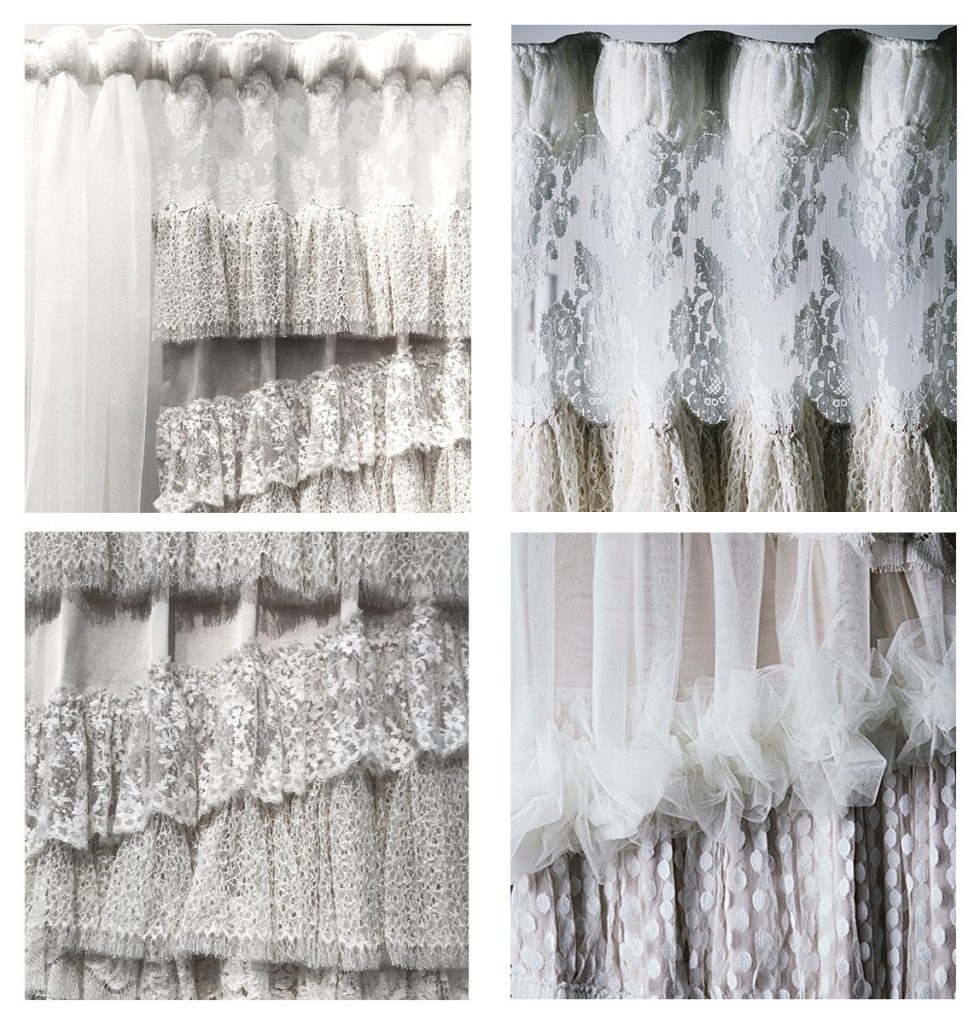News

Révélations 2019


Inspired by the Haute Couture and its great creations, the Ateliers Philippe Coudray revisited the win-dow decor.
From lace to leather, and passementerie, sophistication, abundance, nobility, boldness and excessive-ness join together in the uniqueness of these five pieces made by hand around soft colors at the Atel-iers Philippe Coudray.
Abundance of pleats

Alliance of craft design and industrial production, the pleat symbolizes the movement of life. Resulting from a combination of handwork, cardboard and steam, it allows to shape the material. Curtain entirely handcrafted in cotton velvet in the upper part, with a tier of flat pleats in silk taffeta trimmed with braids in the center, and a tier of asymmetrical pleats in silk taffeta and veil. Curtain head with Dior pleat on flat rod.
Cotton Velvet : Créations Métaphores / Silk Taffeta: Veraseta / Veil: Casamance / Tucker: Plissés de France / Passementier: Passementerie de l’Île de France
Lace Sophistication

Used in the 50’s, the Caudry and Calais lace and net tulle are highly appreciated by the Haute Couture houses with the creations of Christian Dior, Marcel Rochas, Jeanne Lanvin, Pierre Balmain, Carven, etc… Curtain entirely handcrafted in silk satin with an effect of un-der-curtain in net tulle trimmed with a scalloped lace. Application of a succession of floral laces, complex patterns of bouquets, medallions, volutes, dots … Gathered and scalloped curtain head mounted on flat rod.
Lace and Net Tulle: Sophie Hallette / Silk Satin: Veraseta
Pleated Fabric Nobility

Greeks and Romans already had the art of pleating in clothing design. And this is not counting on the emergence of Haute Couture under the Second Empire which sees the pleated design return to the forefront. As a craft and digital technique, pleating today is used by a large number of fashion designers. Curtain entirely handcrafted in polyester vel-vet, forming vertical waves. In the raggy, application of pleats in silk taffeta called “accor-dion pleated” forming a set of patterns. Curtain head with sunray pleats on flat rod.
Polyester Velvet: Zimmer & Rohde / Silk Taffeta: Edmond Petit / Tucker: Plissés de France
Boldness of the Passementerie

Passementerie is a very old art, which can be found all over the world. It was in the spot-light during the Second Empire. There was a trend towards a profusion of fabrics, fringes and tufts. This era was marked by much fantasy and colors. Curtain entirely handcrafted in viscose velvet and silk satin. Application of a set of passementeries, gimp crest, braids, roving fringe, jasmine fringe with pearls and cable stitches, fringe with cross bars and rovings… Curtain head with satin pearls ended by rovings.
Viscose Velvet: Antoine d’Albiousse / Silk Satin: Veraseta / Passementier: Passementerie de l’Île de France
Pride of Braids

Giving braids, moving up the ranks ; the very first passementeries are very old and often related to clothing and ornaments. From 1830 on, passementerie was divided into several categories: fashion, military equipment, church ornaments and decoration. Curtain entirely handcrafted in silk satin ; assembly of leather strips shaped into braid, with application of double leather rope, braided and stitched, maintained by cabled ornaments. Curtain head mounted on a leather braid, embellished with a rope mounted on a sheated rod.
Silk Satin: Veraseta / Passementier: Passementerie de l’Île de France